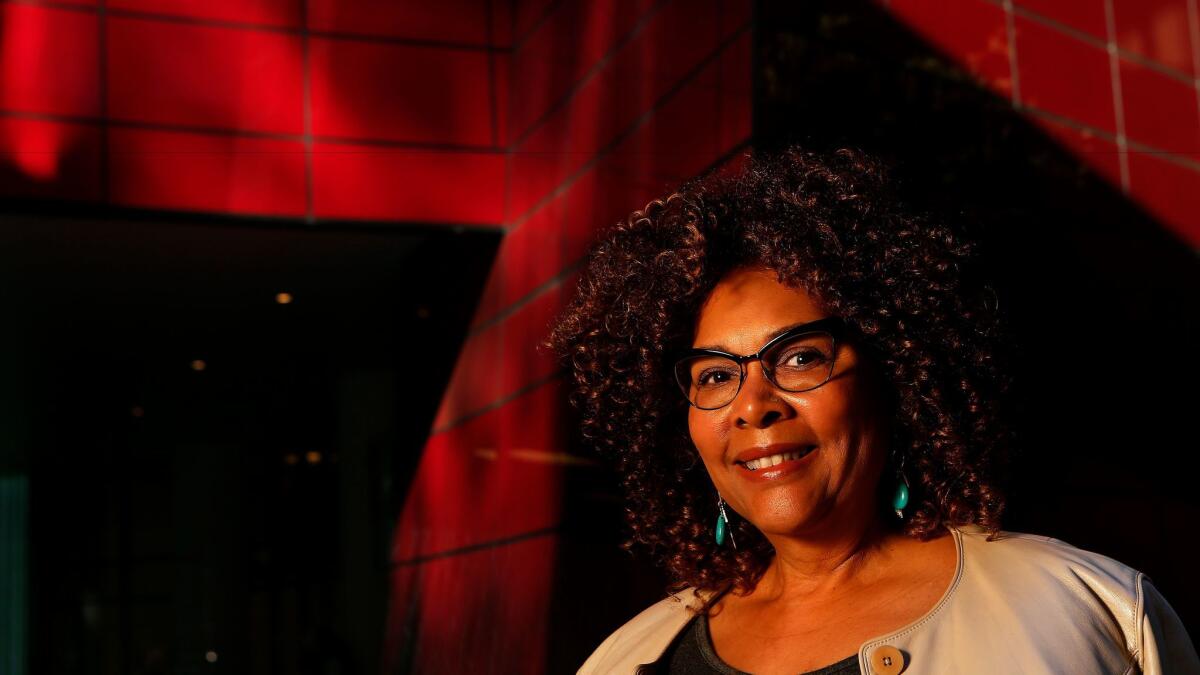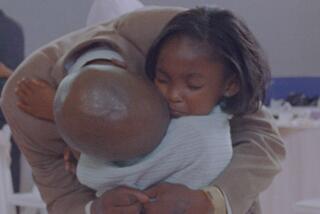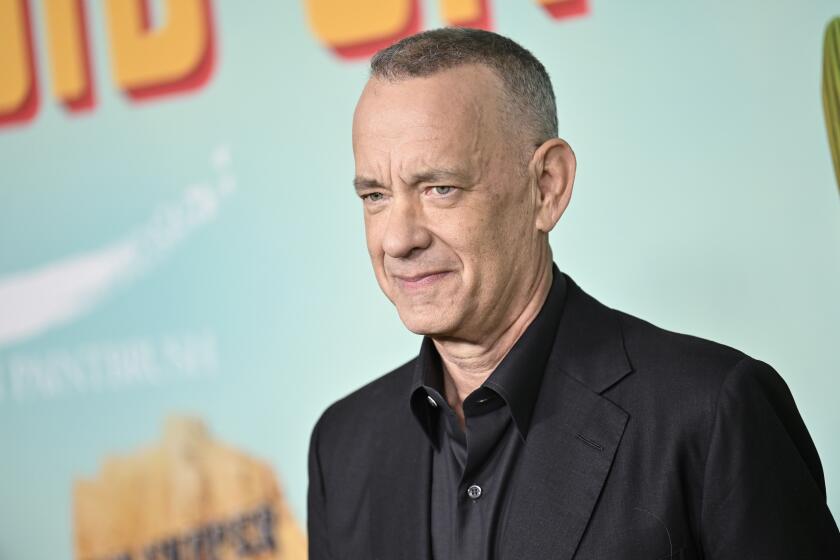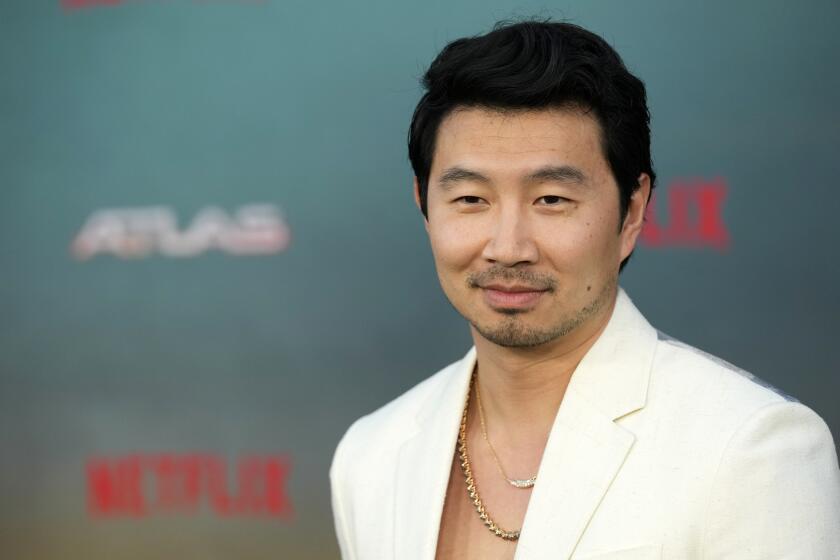25 years later, writer-director Julie Dash looks back on the seminal ‘Daughters of the Dust’

The year is 1975 and Julie Dash is a conservatory student at the American Film Institute. Struck with the idea to create a silent film, she began writing with the hope of doing “a historical drama that redefined African American women — in an epic sort of way.” She wanted black women on the big screen to look different and she wanted to chronicle the culture of her father, a Gullah from the Sea Islands of Georgia. “Because we deserved it,” she said.
But from script to filming, it took 15 years. After all, she was a black woman trying to do a feature-length film centered on a culture of which most people never heard.
“I think I came a bit early,” Dash said. “I don’t think it’s personal. I think it just had to do with general systemic racism and gender issues.”
Finally obtaining funding, from PBS’ American Playhouse, her silent-film idea became a movie with dialogue and titled “Daughters of the Dust.” When released in 1991, it was the first movie by a black woman to get a general distribution deal in the United States, from Kino International. In honor of the 25th anniversary of this historic moment, “Daughters of the Dust” is being re-released Nov. 25. (It will play at Beverly Hills’ Laemmle Ahrya and Pasadena’s Laemmle Playhouse 7.)
“I never expected [the] Cohen [Film Collection] to come in and be eager to do a restoration of the film and place it in the digital space,” Dash said. “That was not on my immediate agenda, but I’m so glad that it happened. It saves the film.”
Set in 1902 in the Sea Islands off the coast of South Carolina and Georgia, “Daughters” explores the community of Gullah Geechee folks, descendants of enslaved West Africans who, after being brought to America, somehow retained much of their West African culture and developed a distinct language. (This community exists to this day.) The film is about a changing of tides in the community where some of the younger generation have decided to leave the island for a new home on the mainland.
The film screened earlier this month as part of AFI’s “Cinema’s Legacy” slate of programming. Prior to the event, Dash, now a film professor at Morehouse College and Howard University, spoke with The Times about “Daughters of the Dust,” diversity and representation in the industry and Beyonce’s “Lemonade.”
Describe what your original intentions were for “Daughters of the Dust.”
I wanted to do something authentic, so authentic [to the Gullah community] it would feel like a foreign film. I felt that we deserved that too. The more and more I learned about the Gullah Geechee culture, the more fascinated I became [because] we learned to camouflage what we love and eat, our desires, how we communicate nonverbally, in order to survive. I originally wrote it as a silent film, because why not? I wanted the visuals to tell the story, to use the grammar of film to plot the story.
The characters speak the actual Gullah language, but there are no subtitles. Was that a conscious decision?
When we watch films like “Miller’s Crossing,” which is Irish-American, or you watch a Chinese American or French American [film], their dialogue is sometimes so heavy into the dialect or the accent, but your ear adjusts to it. But for [black people], we’re only allowed to have a Southern accent. I’ve seen films set in the Sea Islands with people using a Southern accent, which is wrong. It’s like we’re a monolith. I could carve you a black person: They speak the same, eat the same, their lives are the same — that’s not true.
We deserve to preserve the language. We deserve to understand and know the language and the research that Dr. Lorenzo Dow Turner did. He published “Africanisms in the Gullah Dialect” and literally broke the Gullah dialect code — it’s spoken in English with a West African syntax. It’s interesting how these people, who all arrived in a forced migration on these shores speaking different languages, were able to put together a language they could all speak and understand.
When you were pitching the script to financiers, what was the response like?
I remember people saying to me, “Oh, I’ve seen that 100 times.” I told them it wasn’t what they think. After [the film came out], they were like, “I’ve never seen anything like this before. Take it away, take it away.”

Director Julie Dash considers the evolution of non-linear film in a ‘post-Lemonade’ era. (Mel Melcon / Los Angeles Times)
The film won the cinematography award at Sundance that year and you were nominated for the grand jury prize. How did people outside of Hollywood receive it?
The reception of the film by the black community was massive. It was sold out for 36 weeks at the New York Village East theater. Black people leaned toward it. White people who were anthropologists, linguists, artists, dancers and musicians, they could parse it. The rest of America was like, “Why didn’t you do a documentary about it first? I never heard of Gullah Geechee.”
In 2016, we still have black female directors breaking boundaries. What are your thoughts on the conversation about diversity and representation in Hollywood that the industry is having again?
They had it before I was born too, because isn’t it shameful that in 1991 I was the first African American woman to have a film in distribution? I didn’t even know that. I was told that during its release. And then in 2004, “Daughters” was placed in the National Film Registry. I was the first black woman and am still the only black woman in it.
Who, of the younger generation, are the filmmakers you’re looking to?
I like Nzingha Stewart’s work [“With This Ring”] and Tanya Hamilton [“Night Catches Us”], Dee Rees [“Pariah,” “Bessie”], of course Ava [DuVernay] — I can’t say enough about her. She’s turned this industry on its head, and boldly and aggressively by making meaningful films, standing her ground and opening the door for others. When she began “Queen Sugar,” in six months, they finished. And she’s done more for black women filmmakers in six months than Hollywood has done in the last 100 years. When I think about what she has done, I know how difficult that is. In one fell swoop, she has changed the landscape. There’s a lot happening, and she’s making it happen.
Many people say Beyonce’s “Lemonade” was inspired by “Daughters.” How does that feel?
“Lemonade” is more than “Daughters.” It is “Daughters” on steroids. I’m the one humbled by it. Just to have a fraction of a fragment of a moment that reminds people of “Daughters of the Dust” ... it was nice.
Twenty-five years later, are there any lessons people can take away from “Daughters of the Dust” and your experience being the first black woman to break such a ceiling?
I think the lesson is that you have to be brave. You have to be bold. You have to tell your story authentically. You want something that’s meaningful and that lasts. But I haven’t been able to get financing for another feature since then. Who knows the reason why?
Get your life! Follow me on Twitter: @TrevellAnderson.
More to Read
Only good movies
Get the Indie Focus newsletter, Mark Olsen's weekly guide to the world of cinema.
You may occasionally receive promotional content from the Los Angeles Times.











